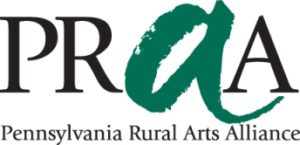Finding Your Organization’s Target Audience

One of the most important resources for any arts organization is their audiences. They are vital to the survival of arts organizations. Before deciding what platforms and mediums of promotion your organization wants to use, it is important to find your target audience. These include the people who have been loyal audience members to your organization and the people who you want to join your audience. It is important to put forth effort to market to both of these groups for effective audience development. Once you know who your target audience is you can make more informed decisions on how to best connect those audiences to the work of your organization.
So how do you find out who your audience is? First, breakdown your audience by what is referred to in marketing as retention and acquisition audiences.
Retention:
The first group, those audience members who have been and you wish to remain loyal to your organization, are referred to as the retention group. Who is already connected to your organization? Who are those audience members you wish to deepen your relationship with? Finding these people may be as simple as looking around the room at your next concert or gallery opening.You can also look at the data from your ticket sales, or attendance records. The key to maintaining your audience is knowing who these people are, and keeping them engaged.
Acquisition:
The second group, those audience members who have not yet encountered your organization but wish to attain, are referred to as the acquisition group. These are the kinds of people you have not yet encountered your organization, but may not know about you. These may also be people who are aware of your organization, but have not yet interacted with your organization. The key to growing your audience is knowing who this group is, and marketing effectively.
Secondly, it is important to evaluate who your organization and what it has to offer in relation to the environment it is in. These may already be a part of your strategic planning process.
- Reflect on what your mission is
- Conduct a S.W.O.T. Analysis (Strengths, Weaknesses, Opportunities, and Threats)
- Conduct an analysis of the arts environment where your organization is located
- Conduct an analysis of potential partners and competitors in your region
- Create goals for your marketing using this information
Thirdly, your organization may want to create profiles of the ideal retention and acquisition audience members. These are imagined profiles of what you think these audience members are like, based on the data you have already collected. Where do they live? What are their interests? What other demographic groups do they belong to? What are their spending habits? There are several ways to do this and multiple articles on how to create a customer profile or audience persona, but we like this article from HubSpot. For a more extensive article on segmenting your audience, check out this text from the National Arts Marketing Project. If you are interested in learning more about how to use data in audience development, we highly recommend looking at this free course from SMU DataArts.
This process can be as brief and simple as you choose to make it. If you are having trouble with any of the steps outlined above, please feel free to contact us for help.
Recent News
- Creative Health Impact Grant Open for the 2024-2025 Year April 22, 2024
- Folkway Feature – Meet the Artist Joe Grkman Jr. March 12, 2024
- Opportunities in the Arts Event December 1, 2023
- Quilting: A Strong-Held Tradition in Armstrong County September 8, 2023
- Intangible Cultural Heritage – What is it? July 14, 2023
